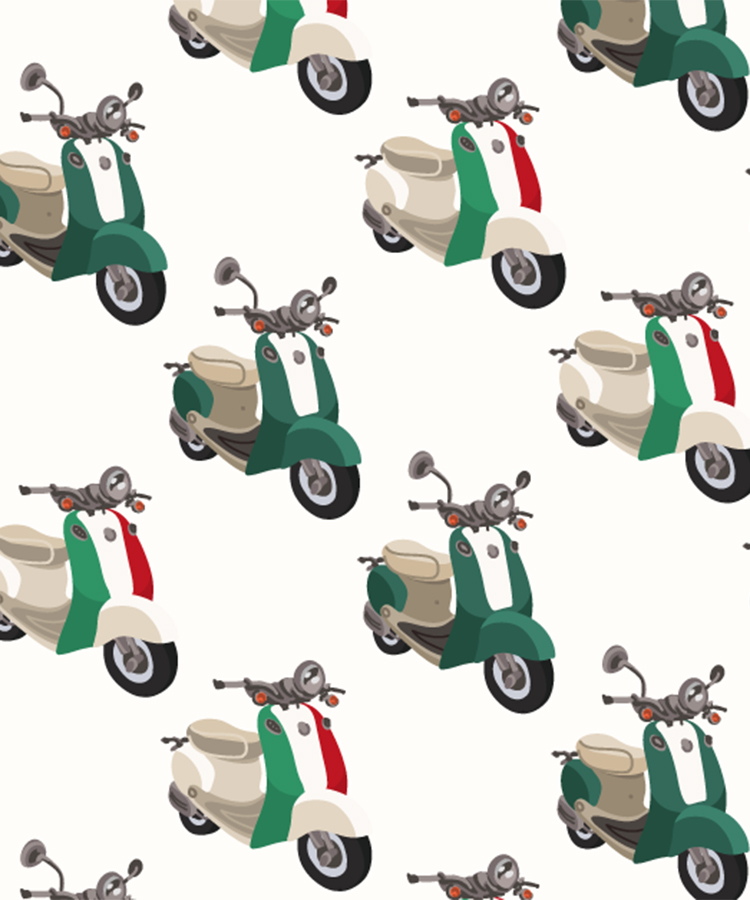Who doesn’t dream of taking an Italian getaway in the summertime? Days strolling through the piazza, evenings spent with a glass al fresco, and sunsets over the vineyards – it’s enough to start Googling “last minute flights to Florence.” But those who can’t live out their Under the Tuscan Sun fantasies can still have an Italian-inspired summer staycation with the country’s many reds that are fit for warm-weather drinking.
With several hundred grape varieties, Italy could fill a wine rack (and then some!) with its summer-appropriate wines. The high natural acidity in most Italian reds makes them perfect with a slight chill, and the diversity within these wine styles means that there’s a summer red for everyone. While the list could go on and on (Barbera and Freisa and Fumin, oh my!), here are the top five red grapes to seek out and discover while the mercury continues to soar. Best of all, it isn’t necessary to pack these five wines up when autumn rolls in; the versatility of these grapes extends their life into the cooler months as well. Plus, there’s sure to be an Indian summer hiding around the corner.
Schiava from Alto Adige
Can’t decide between rosé or red wine? The answer is Schiava, a very pale, light-bodied red grape indigenous to the northern region of Alto Adige. Historically, winemakers in this German-speaking region planted Schiava merely as a workhorse grape for table wine, thinking it unfit for quality winemaking, but in recent years, more and more producers have given Schiava its due attention. Now, this grape of many names (it’s also called Trollinger or Vernatsch) is used to make aromatic, fresh reds that taste of red cherry, strawberry, rose, and a touch of earthy spice. Want to experience some next-level Schiava freshness? Stick the bottle in the fridge!
Refosco from Friuli
If Italy is the worldwide mecca for little-known, geeky grape varieties, Friuli is its grape-oddity capitol. From grapes brought back from near-extinction to ones adopted from neighboring Eastern European countries, Friuli could keep a grape enthusiast busy for months. One of these is actually not a single grape, but a family of grapes: Refosco, which is known for making fresh, juicy, deeply-fruited reds.
While Refosco is also grown in Slovenia and Croatian, it shines in the hilly eastern Friulian regions of Colli Orientali and Collio, where blueberry and blackberry fruit are complemented by herbal undertones and earth. Though it isn’t as light as some of Italy’s reds, Refosco tends to have tons of zingy acidity, making it super quaffable. Lovers of funk will find happiness in Refosco – its quirky character is often accented by a rustic edge.
Frappato from Sicily
If you’ve never heard of Frappato, it’s probably because it doesn’t get as many chances to shine as a varietal wine as it should. Most often blended with the more common Nero d’Avola in southern Sicily’s medium-bodied Cerasuolo di Vittoria wine, Frappato brings the much-needed tenor notes to Nero d’Avola’s bass, which is exactly why some producers are allowing it to sing on its own.
More refreshing than a summer “frappe,” Frappato is fun, playful, and super drinkable, with accents of strawberries and wildflowers – exactly what a summer picnic calls for. Stand-alone Frappato bottlings are still rarer than we’d like them to be, but Arianna Occhipinti, COS, and Occhipinti’s second, more accessible label Tami are reliable (and sought-after) examples. This flirty grape may be elusive, but she’s worth searching for.
Grignolino from Piedmont
Piedmont has such a wealth of well-known grapes that it’s easy to forget about everything outside the triumvirate of Nebbiolo, Barbera, and Dolcetto. It is absolutely worth going on a Piedmontese exploration, however, if only to become acquainted with the deceptive-looking Grignolino grape, which is found almost exclusively in Piedmont (plus a small amount, interestingly, planted in Napa).
Extremely pale in color, Grignolino isn’t all charm and fresh fruit. It can actually have a slight bitterness due to the high amount of grignolo, or pips, found in the grape. However, this bitterness, when vinified well, can add an accent of spicy herbs to the grape’s bright acidity and tart raspberry and cherry fruit, making it an excellent pairing with the tomatoes, olives, and sharp cheeses often found in pasta salads. Anyone who declares Grignolino unlikable simply hasn’t gotten to know it yet.
Chiavennasca from Valtellina
Spoiler alert: you’ve definitely heard of Chiavennasca before, and probably even tasted it from time to time. That’s because Chiavennasca is simply the name for Nebbiolo in the Alpine region of Valtellina. But wait – Nebbiolo is fit to drink in the summertime? As in, the same Nebbiolo used to make the full-bodied, uber-tannic wines of Barolo and Barbaresco? Why, yes – when it’s grown in the right place, that is. Valtellina is located in Lombardia, far northeast of the more famed Nebbiolo regions, where a unique combination of high altitude, steep, hillside vineyards, and good sun exposure creates delicate, focused red wines. The wines still have structure, but instead of smacking you in the face, the tannins are finer, like the last touch of seasoning.
While in the past Chiavennasca had trouble ripening in this decidedly cooler region, climate change has, in fact, aided Valtellina wines, allowing for more consistent vintages. For those who just can’t bear to part with their full-bodied, rich reds in the warmer months, head due north to Valtellina; the wines here offer all the complexity and structure of a bigger wine but with a lighter accent. Did someone say grilled steak and potatoes? Yes, please!
